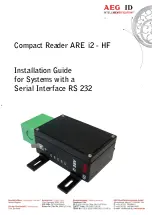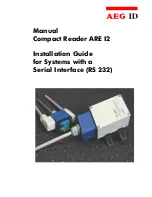
PCI-COM-8ULP User’s Guide
page 37
Common Problems
Symptom
Probable Cause
Recommended Solution
Why does my
computer fail to
turn on?
DC converter is not
plugged into a reliable
power supply or not
connected securely to
the computer’s DC-In
port.
Ensure the converter is plugged into an
electrical outlet (and surge protector if present)
and into the DC-In port of computer. Often
power cords can become inadvertently
disconnected.
Surge protector is not
turned on and/or plugged
in.
If you are using a surge protector, ensure the
surge protector is turned on and plugged in to
the electrical outlet.
Power supply cabling is
shorted to the computer.
Ensure the power supply cabling is not shorted
to the computer. Reposition the power supply
cables to the computer chassis so they are not
pinched or crimped.
(In case of a short, the power supply will sense
the short and shut off. When the short is
removed, the power supply should
automatically sense the removal of the short
and restore operation. If cables become
damaged, contact Kontron for repair or
replacement
System is not
booting, just
beeping.
Memory is not seated
correctly or is faulty.
1 beep, 2 beeps, or 3 beeps:
Re-seat the memory first. If that does not fix
the problem, replace the memory with known
good chips.
BIOS is corrupt.
If your system still fails to boot after reseating
the memory and checking cables and boards,
try reflashing the BIOS with the latest version,
if possible.
When attempting
to boot the system,
“No ROM BASIC”
is displayed.
System cannot find a
proper bootable sector
on the boot device.
Install an operating system on the hard drive
or boot from a floppy disk.
Hard disk drive
controller failure
Ribbon cable or power
connector not installed
correctly
Confirm correct cabling to the hard-drive
ribbon cable and power connectors.
Master/Slave
jumpers
not configured on hard
drives.
Configure the “Master/Slave” jumpers on the
hard drives. When sharing a single IDE
channel, one drive must be Master and the
second drive must be configured as Slave.
Hard drive parameters in
BIOS are incorrect.
Confirm hard-drive parameters in the BIOS
setup are correct. Auto-detect the drives and
confirm detected parameters are correct for
the hard drives.
Hard drive not seen in
FDISK
Verify that the hard drive is seen in FDISK and
run FDISK/mbr from boot floppy.
Summary of Contents for PCI-COM-8ULP
Page 1: ...PCI COM 8ULP User s Guide May 2006...
Page 8: ...page 8 PCI COM 8ULP User s Guide This page intentionally left blank...
Page 14: ...page 14 PCI COM 8ULP User s Guide This page intentionally left blank...
Page 32: ...page 32 PCI COM 8ULP User s Guide This page intentionally left blank...
Page 38: ...page 38 PCI COM 8ULP User s Guide This page intentionally left blank...


































